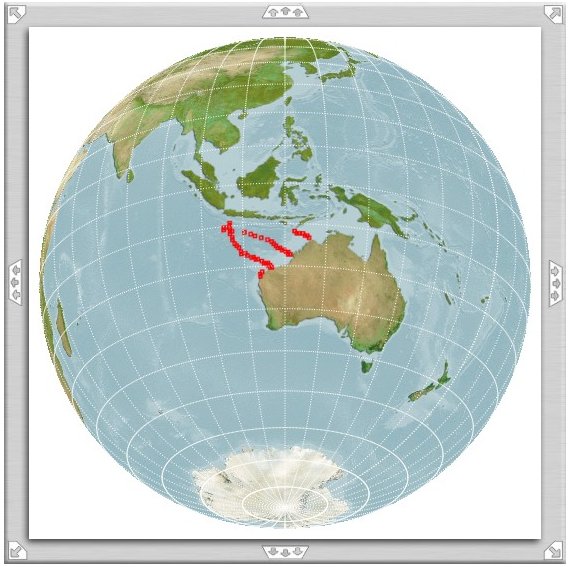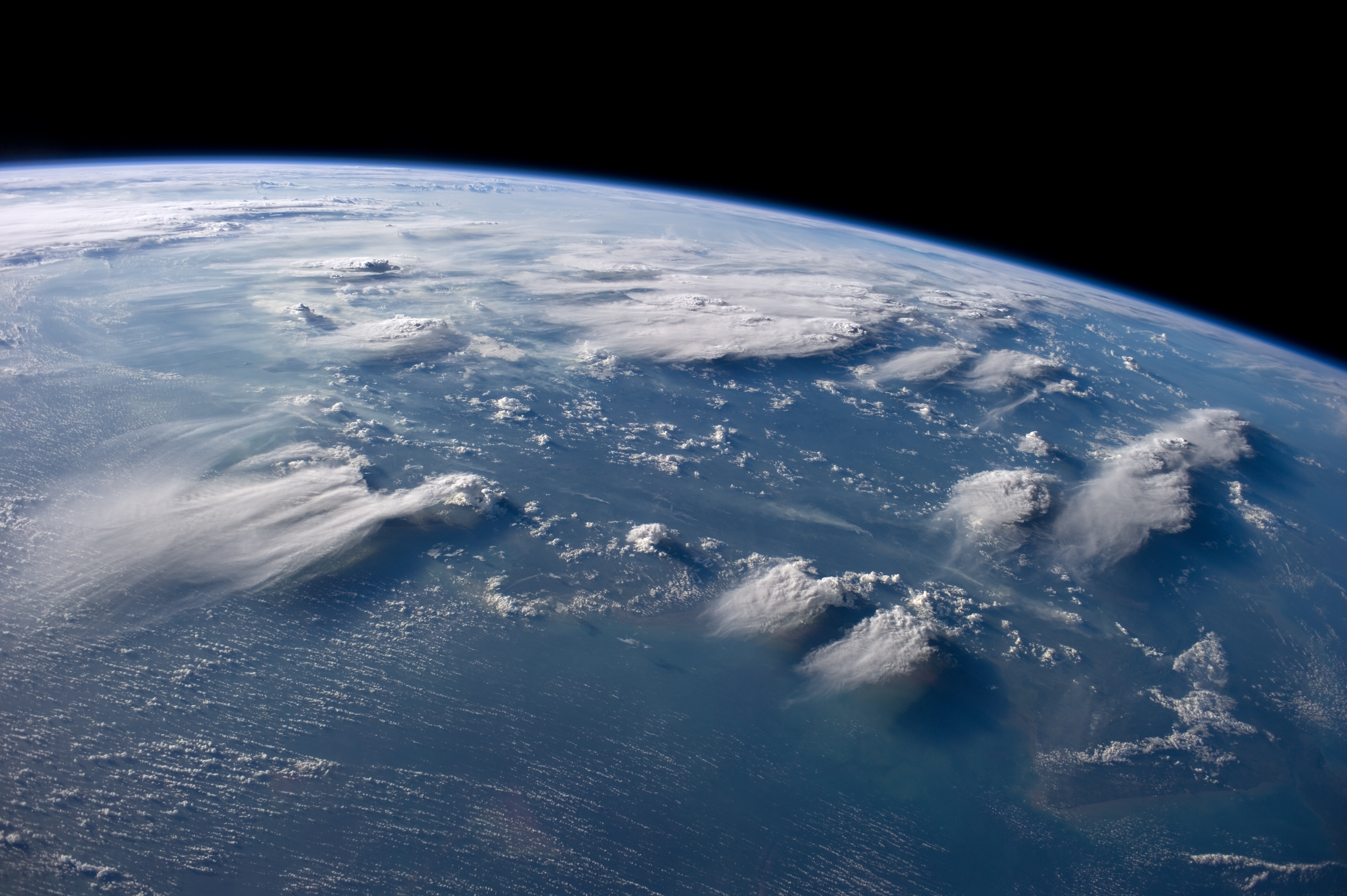|
EarthDesk
{{Infobox Software , name = EarthDesk , logo = EarthDesk Icon.png , logo size = 60px , screenshot = EarthDesk Screenshot.png , screenshot size = 250px , caption = EarthDesk on Mac OS X , developer = Xeric Design, Ltd. , latest_release_version = 6.0 (Mac), 5.2 (Windows) , latest_release_date = August 2012 (Mac), April 2012 (Windows) , operating_system = macOS, Windows 2000, Windows XP, Windows Vista and Windows 7 , genre = Computer wallpaper changer , license = Commercial , website www.xericdesign.com/earthdesk.php EarthDesk is a software application for Microsoft Windows and macOS that changes the computer user's desktop image to a constantly updating view of Earth. The software can be set to update daylight and moonlight coverage on the map, as well as live cloud images which are superimposed onto the map. The cloud option requires an Internet connection. Features The map is fully customisable. Users can choose between various map projections, whether to use a satel ... [...More Info...] [...Related Items...] OR: [Wikipedia] [Google] [Baidu] |
OSXplanet
Xplanet is a renderer for planetary and Solar System images, capable of producing various types of graphics depicting the Solar System. It is normally used to create computer wallpapers, which may be updated with the latest cloud maps or the regions of Earth which are in sunlight. Xplanet is free software released under the GNU GPL. Flat maps Xplanet can be used to produce cartography, projected maps of any planet (but typically Earth), for example Mollweide projections which show the whole Earth at once, or Mercator projections with a rectangular appearance suitable for filling the screen. It is possible to overlay clouds or text (such as the location of recent events) onto these maps; a popular option is shading areas currently experiencing night. Planetary images Xplanet can also be used to render more general views of objects in the Solar System, such as a view of the Earth from the Moon. In more recent versions, Xplanet depicts eclipses, and some of its images show Jupit ... [...More Info...] [...Related Items...] OR: [Wikipedia] [Google] [Baidu] |
MacOS
macOS (; previously OS X and originally Mac OS X) is a Unix operating system developed and marketed by Apple Inc. since 2001. It is the primary operating system for Apple's Mac (computer), Mac computers. Within the market of desktop and laptop computers it is the Usage share of operating systems#Desktop and laptop computers, second most widely used desktop OS, after Microsoft Windows and ahead of ChromeOS. macOS succeeded the classic Mac OS, a Mac operating system with nine releases from 1984 to 1999. During this time, Apple cofounder Steve Jobs had left Apple and started another company, NeXT Computer, NeXT, developing the NeXTSTEP platform that would later be acquired by Apple to form the basis of macOS. The first desktop version, Mac OS X 10.0, was released in March 2001, with its first update, 10.1, arriving later that year. All releases from Mac OS X Leopard, Mac OS X 10.5 Leopard and after are UNIX 03 certified, with an exception for OS X Lion, OS X 10. ... [...More Info...] [...Related Items...] OR: [Wikipedia] [Google] [Baidu] |
Cloud
In meteorology, a cloud is an aerosol consisting of a visible mass of miniature liquid droplets, frozen crystals, or other particles suspended in the atmosphere of a planetary body or similar space. Water or various other chemicals may compose the droplets and crystals. On Earth, clouds are formed as a result of saturation of the air when it is cooled to its dew point, or when it gains sufficient moisture (usually in the form of water vapor) from an adjacent source to raise the dew point to the ambient temperature. They are seen in the Earth's homosphere, which includes the troposphere, stratosphere, and mesosphere. Nephology is the science of clouds, which is undertaken in the cloud physics branch of meteorology. There are two methods of naming clouds in their respective layers of the homosphere, Latin and common name. Genus types in the troposphere, the atmospheric layer closest to Earth's surface, have Latin names because of the universal adoption of L ... [...More Info...] [...Related Items...] OR: [Wikipedia] [Google] [Baidu] |
Computer Monitor
A computer monitor is an output device that displays information in pictorial or textual form. A discrete monitor comprises a visual display, support electronics, power supply, housing, electrical connectors, and external user controls. The display in modern monitors is typically an LCD with LED backlight, having by the 2010s replaced CCFL backlit LCDs. Before the mid- 2000s, most monitors used a CRT. Monitors are connected to the computer via DisplayPort, HDMI, USB-C, DVI, VGA, or other proprietary connectors and signals. Originally, computer monitors were used for data processing while television sets were used for video. From the 1980s onward, computers (and their monitors) have been used for both data processing and video, while televisions have implemented some computer functionality. In the 2000s, the typical display aspect ratio of both televisions and computer monitors has changed from 4:3 to 16:9. Modern computer monitors are mostly interchangeable with ... [...More Info...] [...Related Items...] OR: [Wikipedia] [Google] [Baidu] |
Moon
The Moon is Earth's only natural satellite. It is the fifth largest satellite in the Solar System and the largest and most massive relative to its parent planet, with a diameter about one-quarter that of Earth (comparable to the width of Australia). The Moon is a planetary-mass object with a differentiated rocky body, making it a satellite planet under the geophysical definitions of the term and larger than all known dwarf planets of the Solar System. It lacks any significant atmosphere, hydrosphere, or magnetic field. Its surface gravity is about one-sixth of Earth's at , with Jupiter's moon Io being the only satellite in the Solar System known to have a higher surface gravity and density. The Moon orbits Earth at an average distance of , or about 30 times Earth's diameter. Its gravitational influence is the main driver of Earth's tides and very slowly lengthens Earth's day. The Moon's orbit around Earth has a sidereal period of 27.3 days. During each s ... [...More Info...] [...Related Items...] OR: [Wikipedia] [Google] [Baidu] |
Night
Night (also described as night time, unconventionally spelled as "nite") is the period of ambient darkness from sunset Sunset, also known as sundown, is the daily disappearance of the Sun below the horizon due to Earth's rotation. As viewed from everywhere on Earth (except the North and South poles), the equinox Sun sets due west at the moment of both the spring ... to sunrise during each 24-hour day, when the Sun is below the horizon. The exact time when night begins and ends depends on the location and varies throughout the year, based on factors such as season and latitude. The word can be used in a different sense as the time between bedtime and morning. In common communication, the word ''night'' is used as a farewell ("good night", sometimes shortened to "night"), mainly when someone is going to sleep or leaving. Astronomical night is the period between astronomical dusk and astronomical dawn when the Sun is between 18 and 90 degrees below the horizon and does not i ... [...More Info...] [...Related Items...] OR: [Wikipedia] [Google] [Baidu] |
Political
Politics (from , ) is the set of activities that are associated with making decisions in groups, or other forms of power relations among individuals, such as the distribution of resources or status. The branch of social science that studies politics and government is referred to as political science. It may be used positively in the context of a "political solution" which is compromising and nonviolent, or descriptively as "the art or science of government", but also often carries a negative connotation.. The concept has been defined in various ways, and different approaches have fundamentally differing views on whether it should be used extensively or limitedly, empirically or normatively, and on whether conflict or co-operation is more essential to it. A variety of methods are deployed in politics, which include promoting one's own political views among people, negotiation with other political subjects, making laws, and exercising internal and external force, includi ... [...More Info...] [...Related Items...] OR: [Wikipedia] [Google] [Baidu] |
Satellite
A satellite or artificial satellite is an object intentionally placed into orbit in outer space. Except for passive satellites, most satellites have an electricity generation system for equipment on board, such as solar panels or radioisotope thermoelectric generators (RTGs). Most satellites also have a method of communication to ground stations, called transponders. Many satellites use a standardized bus to save cost and work, the most popular of which is small CubeSats. Similar satellites can work together as a group, forming constellations. Because of the high launch cost to space, satellites are designed to be as lightweight and robust as possible. Most communication satellites are radio relay stations in orbit and carry dozens of transponders, each with a bandwidth of tens of megahertz. Satellites are placed from the surface to orbit by launch vehicles, high enough to avoid orbital decay by the atmosphere. Satellites can then change or maintain the orbit by pr ... [...More Info...] [...Related Items...] OR: [Wikipedia] [Google] [Baidu] |
Map Projection
In cartography, map projection is the term used to describe a broad set of transformations employed to represent the two-dimensional curved surface of a globe on a plane. In a map projection, coordinates, often expressed as latitude and longitude, of locations from the surface of the globe are transformed to coordinates on a plane. Projection is a necessary step in creating a two-dimensional map and is one of the essential elements of cartography. All projections of a sphere on a plane necessarily distort the surface in some way and to some extent. Depending on the purpose of the map, some distortions are acceptable and others are not; therefore, different map projections exist in order to preserve some properties of the sphere-like body at the expense of other properties. The study of map projections is primarily about the characterization of their distortions. There is no limit to the number of possible map projections. More generally, projections are considered in several ... [...More Info...] [...Related Items...] OR: [Wikipedia] [Google] [Baidu] |
Internet
The Internet (or internet) is the global system of interconnected computer networks that uses the Internet protocol suite (TCP/IP) to communicate between networks and devices. It is a ''internetworking, network of networks'' that consists of private, public, academic, business, and government networks of local to global scope, linked by a broad array of electronic, wireless, and optical networking technologies. The Internet carries a vast range of information resources and services, such as the inter-linked hypertext documents and Web application, applications of the World Wide Web (WWW), email, electronic mail, internet telephony, telephony, and file sharing. The origins of the Internet date back to the development of packet switching and research commissioned by the United States Department of Defense in the 1960s to enable time-sharing of computers. The primary precursor network, the ARPANET, initially served as a backbone for interconnection of regional academic and mi ... [...More Info...] [...Related Items...] OR: [Wikipedia] [Google] [Baidu] |
Moonlight
Moonlight consists of mostly sunlight (with little earthlight) reflected from the parts of the Moon's surface where the Sun's light strikes. Illumination The intensity of moonlight varies greatly depending on the lunar phase, but even the full Moon typically provides only about 0.05–0.1 lux illumination. When a full Moon around perigee (a " supermoon") is viewed around upper culmination from the tropics, the illuminance can reach up to 0.32 lux. From Earth, the apparent magnitude of the full Moon is only about that of the Sun. The color of moonlight, particularly around full moon, appears bluish to the human eye compared to other, brighter light sources due to the Purkinje effect. The blue or silver appearance of the light is an illusion. The Moon's bond albedo is 0.12, meaning only 12% of incident sunlight is reflected from the lunar surface. Moonlight takes approximately 1.26 seconds to reach Earth's surface. Scattered in Earth's atmosphere, moonligh ... [...More Info...] [...Related Items...] OR: [Wikipedia] [Google] [Baidu] |






